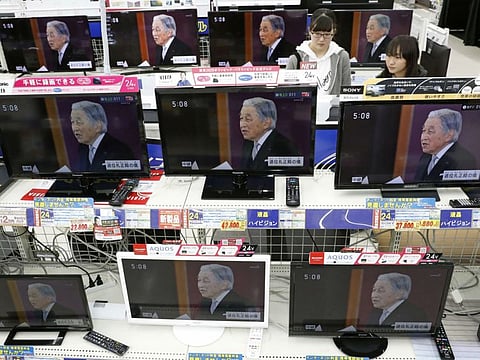How to abdicate a throne the Akihito way
Japan’s emperor bypassed the government by asking people to endorse his departure

The emperor of Japan, Akihito, abdicated on April 30, paving the way for his son Naruhito to take the throne on May 1. His decision is widely being described as a break from a 200-year tradition. In fact, it is a return to an older, even longer-standing tradition, with a modern twist.
Akihito is said to have first expressed his desire to abdicate in 2010, at an informal meeting of the advisory council to the Imperial Household Agency, the government body that oversees ceremonies and protocol for the royal family.
But that wish ran against the Imperial Household Law of Japan, which stipulates that the emperor will reign for life. And so for some years, successive governments failed to address his request. Presumably, they feared that allowing his abdication might appear as though the will of the emperor was contravening the laws that govern imperial succession — thus violating the Constitution, which states that the emperor has no power over affairs of state.
Then an unrelated disaster struck, bringing unexpected clarity to this issue.
On March 11, 2011, part of eastern Japan was hit by a massive earthquake, which triggered a tsunami and then a nuclear meltdown at the Fukushima Daiichi power plant. Within days, Akihito made the first televised address of his reign to console and encourage his nation. The emperor’s words had a tremendous impact on Japan’s reeling, grieving people. For weeks afterward, he and Empress Michiko made trips to the affected areas, visiting disaster zones and evacuation shelters. Reverence for the imperial family increased.
So did the emperor’s leverage with the government.
On August 8, 2016, Akihito appeared on television again, in a video message, this time referring to his old age; he was now publicly hinting at his desire to leave the throne. That address was, in effect, a direct appeal to the people — and a way, both savvy and elegant, to bypass legal restrictions and government stonewalling. Appealing to the nation itself for support could not be said to constitute political interference.
The conservative administration of Prime Minister Shinzo Abe, still reluctant to revise the Imperial Household Law, nonetheless seemed to understand that it couldn’t, or would be unwise to, go against an overwhelming majority of the people. The cabinet appointed a panel that prepared and sent to the Diet — as Japan’s legislature is known — a bill carving out a one-time exception that would allow Akihito to abdicate. Special legislation was passed in June 2017, but the Imperial Household Law itself was not amended. A grand compromise, of sorts, had been found.
This result was a curious play on Japanese tradition and precedent.
The requirement that Japan’s emperors reign for life has been in place since the Meiji Era, in the late-19th century. Before then, however, the country’s rulers were free to leave the throne — and between 645 and 1817 more than half of Japan’s emperors abdicated. In other words, Akihito’s abdication isn’t a break from tradition; it’s a return to an anterior practice.
At the same time, it bears a modern mark: popular endorsement.
On August 15, 1945, a speech by Hirohito, Japan’s wartime emperor and Akihito’s father, was broadcast over the radio announcing to the nation that Japan was surrendering to the Allies. The emperor’s message — interpreted as a directive — in turn became the will of the people. The fighting promptly ceased.
One could say that Akihito’s message about abdication, like his father’s about surrender, also shaped the will of the people. But Akihito appealed to them instead of commanding them. And so even as his abdication harks back to a pre-modern era, it also reveals how much Japan has changed in recent decades.
— New York Times News Service
Takeshi Hara is a professor of politics at the Open University of Japan.
Sign up for the Daily Briefing
Get the latest news and updates straight to your inbox


